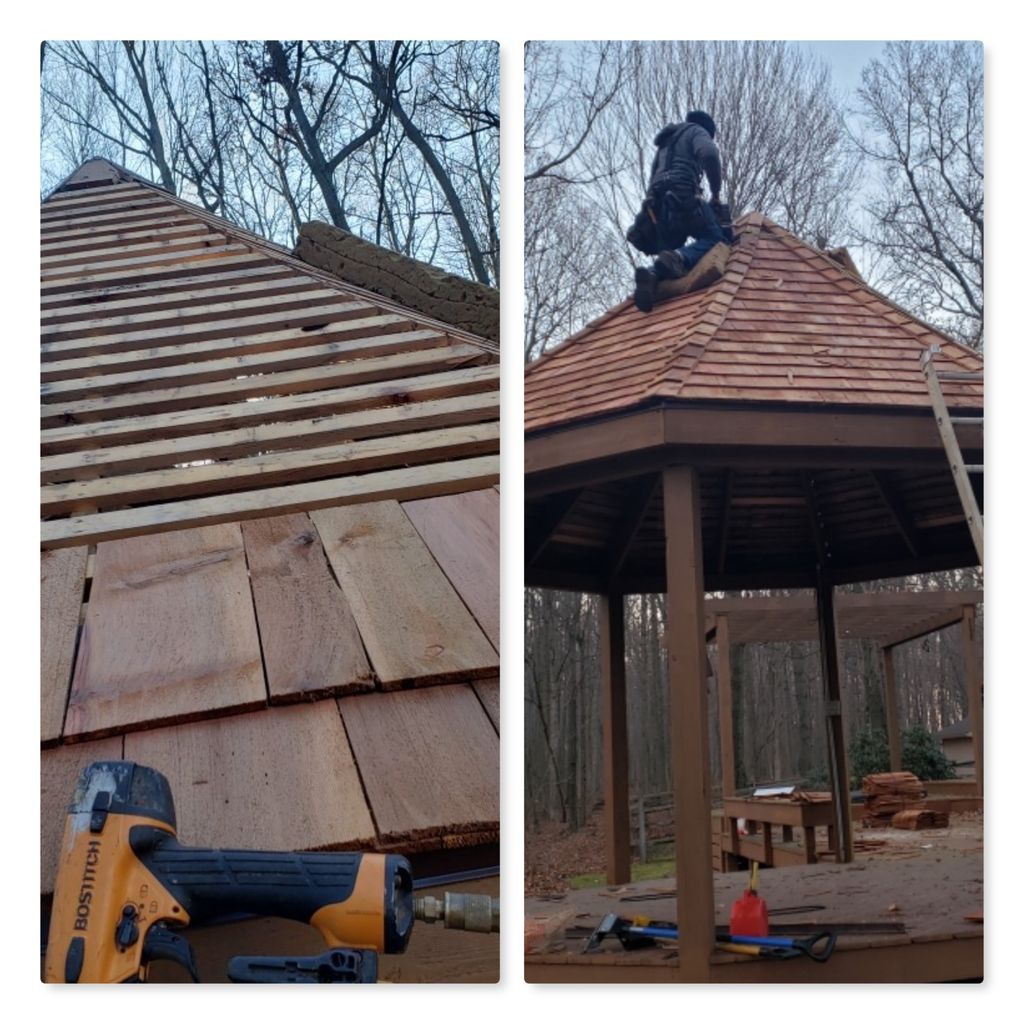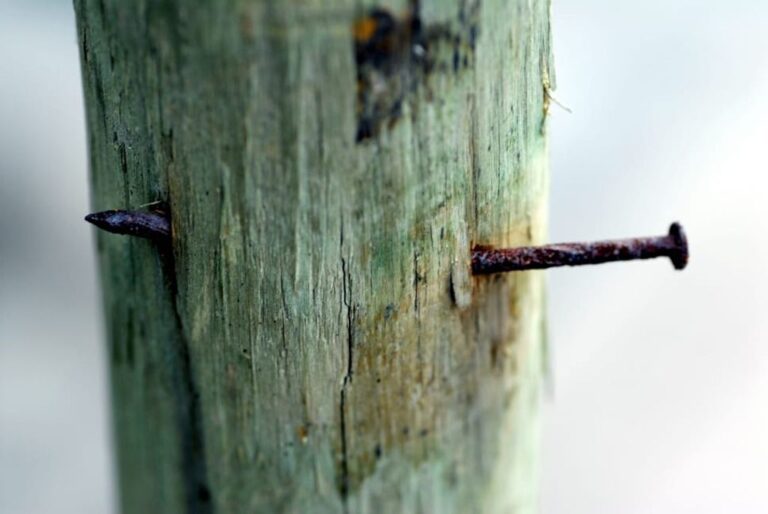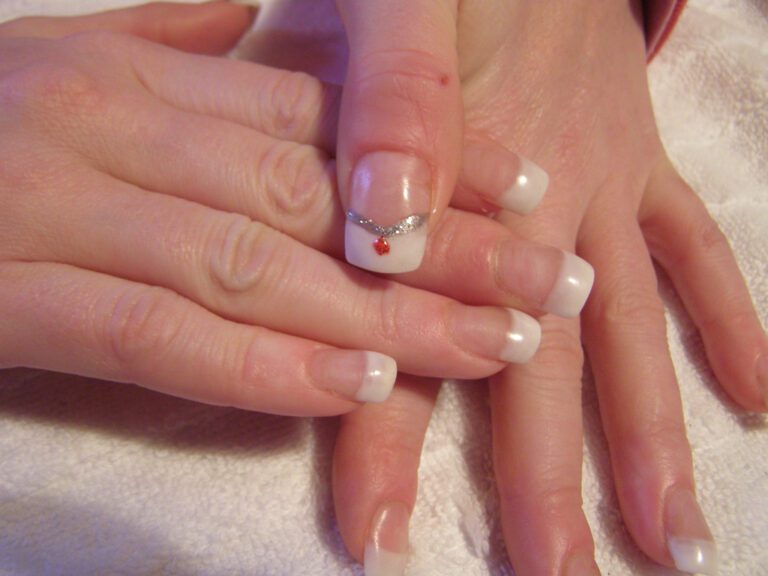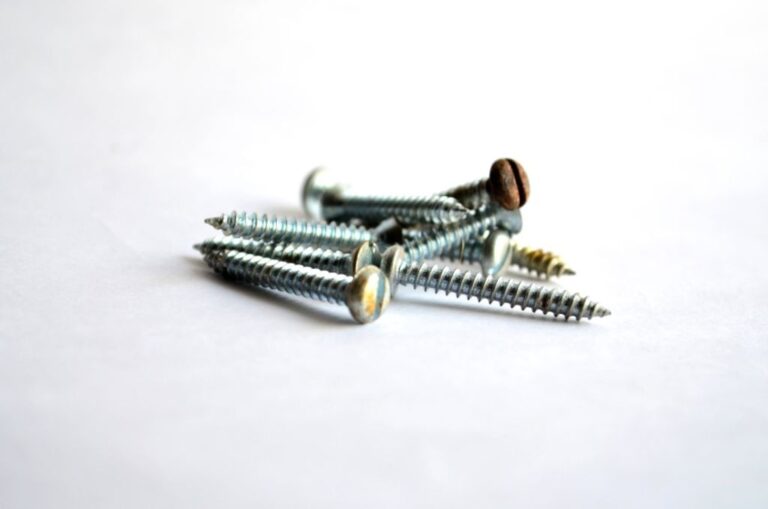“Shingled Beauty: Where Nail Shingles Come From”
Nail shingles have a rich history and play a crucial role in the construction industry. From their origins to the latest market trends, nail shingles have evolved significantly, impacting both the environment and consumer preferences. This article explores the origins, materials, types, installation techniques, environmental impact, and market trends of nail shingles, providing valuable insights into their significance and influence.
Key Takeaways
- Nail shingles have a diverse range of origins, influenced by historical development and geographical sources.
- The raw materials used in nail shingle manufacturing have evolved, leading to advancements in shingle technology.
- There are various types of nail shingles, including asphalt, wood, slate, and solar shingles, each with unique characteristics and applications.
- Proper installation techniques are essential for ensuring the durability and weather resistance of nail shingles, involving preparation, safety measures, and nailing methods.
- The environmental impact of nail shingles is a growing concern, driving the need for sustainability, recycling, and eco-friendly alternatives.
The Origins of Nail Shingles

Historical Development
The history of nail shingles is as layered as the shingles themselves. Initially, the craft of shingle making was a manual endeavor, with each piece being hand-cut and shaped. This artisanal approach was the standard until the industrial revolution brought about significant changes in the production of building materials.
The transition from hand-crafted to machine-manufactured shingles marked a pivotal moment in the industry. The introduction of the cut nail in the 19th century revolutionized the way shingles were fastened to roofs, enhancing both the speed of installation and the durability of the finished product. Prior to this, hand-wrought (forged) nails were the norm, which required more labor and time.
Advancements in shingle technology have continued to evolve, with modern processes allowing for greater efficiency and variety in materials. Today’s market offers a multitude of options, each with its own set of benefits and aesthetic appeal.
Geographical Sources
The production of nail shingles is a global enterprise, with materials sourced from various corners of the world. The geographical diversity of these sources is crucial, as it ensures a steady supply of raw materials and caters to regional preferences in shingle styles.
- North America is renowned for its vast forests, providing timber for wood shingles.
- Europe offers high-quality slate from its age-old quarries.
- The Middle East and parts of Asia are key suppliers of bitumen, essential for asphalt shingles.
- Innovative solar shingles are often developed and produced in technologically advanced regions like Silicon Valley.
Tip: When selecting nail shingles, consider the source of the materials to assess the environmental impact and support sustainable practices.
Each region brings its unique characteristics to the shingles, influencing factors such as durability, aesthetics, and cost. By understanding the geographical sources, consumers and professionals can make informed choices that align with their specific needs and values.
Materials and Manufacturing

Raw Materials Used
The production of nail shingles begins with the procurement of specific raw materials, each chosen for their durability, cost-effectiveness, and suitability for the end product. The most common materials include:
- Asphalt, a waterproofing and adhesive agent
- Wood, primarily cedar or redwood for its natural resistance to decay
- Slate, valued for its longevity and aesthetic appeal
- Fiberglass, used as a reinforcing mat in asphalt shingles
- Ceramic granules, which protect against UV rays and add color
Asphalt shingles, the most prevalent type, rely heavily on the quality of asphalt and fiberglass to ensure longevity. Wood shingles, on the other hand, depend on the type and treatment of the wood. The selection of slate for shingles is a meticulous process, as it must be split and cut to the appropriate thickness and size.
Tip: Always check the source and quality of raw materials when selecting shingles, as they significantly impact the product’s durability and performance.
The Production Process
The production process of nail shingles involves several key steps, including the application of protective coatings and the use of specialized machinery for precise shaping and cutting. Each shingle is carefully inspected for quality and durability before being packaged for distribution. The table below provides a summary of the production stages and the corresponding timeframes.
Advancements in Shingle Technology
The landscape of nail shingle technology has witnessed significant transformations in recent years. Innovations have not only improved the quality and durability of shingles but also their environmental footprint. One of the most notable advancements is the development of solar shingles, which integrate solar photovoltaic cells into traditional roofing materials, offering a dual-purpose solution that generates electricity while protecting the home.
Cool roofing is another technological leap forward, reflecting more sunlight and absorbing less heat than standard shingles. This results in lower energy costs and improved indoor comfort. Similarly, green roofing systems support plant life on rooftops, contributing to better insulation and urban biodiversity.
The introduction of self-healing shingles represents a breakthrough in durability. These shingles can repair minor damages autonomously, extending their lifespan and reducing maintenance costs. Additionally, the use of drones for roof inspections and shingle installations is streamlining the assessment and repair processes, enhancing safety and efficiency.
Embracing these technological advancements can lead to significant benefits, from cost savings to environmental conservation. Homeowners and builders alike should consider the long-term advantages of these innovative shingle technologies.
Types of Nail Shingles

Asphalt Shingles
Asphalt shingles are the most commonly used roofing material in North America, valued for their cost-effectiveness and ease of installation. These shingles are made primarily from asphalt, a waterproofing and adhesive agent, and are reinforced with a fiberglass mat or organic base.
The production of asphalt shingles is a multi-step process. It typically starts with a sheet of fiberglass membrane, which provides the necessary strength and durability. The fiberglass is then coated with asphalt to ensure waterproofing. Finally, granules are added to the top layer for UV protection and aesthetic appeal.
Asphalt shingles come in a variety of styles and colors, allowing homeowners to choose options that best fit their home’s architectural style and personal preferences. Despite their popularity, it’s important to consider the environmental impact of these shingles, as they are not easily recyclable.
When selecting asphalt shingles, it’s crucial to consider both the warranty and the manufacturer’s reputation for quality. This can greatly affect the longevity and performance of your roof.
Wood Shingles
Wood shingles are known for their natural aesthetic and eco-friendly properties. They are often made from cedar or redwood, providing a durable and visually appealing roofing option. Wood shingles are popular for their insulation properties and ability to withstand strong winds. Their natural resistance to decay and insects makes them a long-lasting and sustainable choice for roofing material. Additionally, wood shingles can be treated with fire-retardant coatings to enhance their fire resistance.
Slate Shingles
Slate shingles are a premium roofing material known for their natural beauty and longevity. Extracted from quarries, these shingles are made from slate, a fine-grained metamorphic rock. The durability of slate makes it an ideal choice for areas with severe weather conditions, as it can withstand high winds, heavy rain, and snow.
When considering slate shingles, it’s important to note their weight. They are significantly heavier than other types of shingles, which may require additional structural support. Despite the higher initial investment, slate’s lifespan can extend up to 100 years, making it a cost-effective option over time.
Installation of slate shingles requires specialized skills, and it’s crucial to ensure that the contractor has experience with this material. Proper installation is key to maximizing the shingles’ lifespan and maintaining their aesthetic appeal.
Tip: Always check the warranty and authenticity of the slate shingles to ensure you are getting a quality product that will stand the test of time.
Solar Shingles
Solar shingles are an innovative roofing solution that seamlessly integrates solar technology with traditional shingle design. These shingles offer a discreet and aesthetically pleasing way to harness solar energy, making them an attractive option for environmentally conscious homeowners. The installation of solar shingles involves careful consideration of the roof’s orientation, shading, and structural integrity to maximize energy production and longevity. Additionally, the cost of solar shingles may vary based on factors such as brand, efficiency, and installation requirements. Homeowners should weigh the long-term energy savings against the initial investment to determine the suitability of solar shingles for their roofing needs.
Installation Techniques

Preparation and Safety
Proper preparation is the cornerstone of a successful and safe nail shingle installation. Before commencing the project, it is crucial to conduct a complete tear-off of the old roofing materials to ensure a clean and stable surface. This step is essential for the longevity of the new shingles and can prevent future issues.
Safety cannot be overstated when working on a roof. Gather all necessary safety equipment, including a sturdy ladder, non-slip footwear, and protective gloves. It’s also important to be mindful of the weather conditions; avoid working in extreme weather to reduce the risk of accidents.
Tip: Always use the shingle manufacturer’s branded felt paper or underlayment for the best results. This ensures compatibility and enhances the overall performance of the roofing system.
Here’s a basic checklist to help you prepare for the installation:
- A complete tear-off of existing roofing
- Inspection and repair of the roof deck
- Installation of a drip edge
- Use of manufacturer-specific underlayment
- Ensuring all tools and safety gear are at hand
Nailing Methods
Proper nailing is crucial for the longevity and performance of nail shingles. The number of nails used per shingle can vary depending on the type of shingle and the region’s weather conditions. For example, standard practice is to use four roofing nails per shingle, but in areas prone to high winds, six nails may be recommended to prevent uplift.
When installing slate shingles, it’s important to nail them neither too tightly nor too loosely. The National Slate Association emphasizes the craft of nailing, which is essential for a roof’s longevity. Each nail should be driven just right to ensure the slate remains secure without being damaged.
Tip: Always refer to the manufacturer’s instructions for the correct nailing pattern and number of nails required. This will help prevent issues such as exposed nails, which can lead to leaks and require additional steps, like applying asphalt cement over the nail head for sealing.
Following the correct nailing recommendations is not only about the number of nails but also about their placement. Nails should be positioned in a way that they are covered by the next course of shingles, thus preventing water penetration and potential damage.
Ensuring Durability and Weather Resistance
Ensuring the durability and weather resistance of nail shingles is paramount for the longevity of a roof. The selection of the right nail is critical, as they must be able to withstand the rigors of extreme weather conditions. Corrosion-resistant roofing nails are essential to maintain the integrity of the roof over time.
To achieve optimal durability, it’s important to follow best practices during installation. Here’s a list of key considerations:
- Use the correct nail size and type for the shingle material.
- Ensure nails are driven straight and flush with the shingle surface.
- Avoid overdriving nails, which can damage shingles and reduce their ability to resist wind uplift.
- Seal nail heads with a suitable sealant to prevent water penetration.
Tip: Always check local building codes for specific nailing requirements to ensure compliance and maximum protection against the elements.
Regular maintenance and inspections can also play a significant role in the longevity of shingled roofs. Addressing minor issues promptly can prevent larger, more costly problems down the line.
Environmental Impact

Sustainability Concerns
The sustainability of nail shingles is a pressing concern in the construction industry. Traditional asphalt shingles, while popular for their affordability and ease of installation, pose significant environmental challenges. They are often not recyclable, leading to increased waste in landfills. In contrast, metal roofing options offer a more sustainable alternative, with a longer lifespan and the potential for recycling at the end of their use.
- Recycling: Asphalt shingles are notoriously difficult to recycle, contributing to environmental degradation. Efforts to repurpose these materials can significantly reduce their ecological footprint.
- Landfill Impact: The disposal of non-recyclable shingles adds to the growing problem of landfill overflow, exacerbating the strain on our planet’s resources.
Embracing eco-friendly roofing materials and recycling initiatives can markedly diminish the environmental impact of roofing waste. It is crucial for the industry to shift towards sustainable practices to ensure a healthier ecosystem.
Recycling and Disposal
The disposal of nail shingles poses a significant challenge due to their durability and the materials involved. However, recycling efforts have been gaining traction, offering a more environmentally friendly alternative to traditional disposal methods. Asphalt shingles, for instance, can often be recycled into new shingles or used for patching roads, reducing the need for virgin materials.
Shingle recycling is not universally available, and the process varies by location. It’s essential to check with local waste management services or dedicated recycling contractors to understand the options. Here’s a simple guide to help you start:
- Determine the type of shingles you have.
- Search for local recycling facilities or contractors that accept shingles.
- Inquire about the recycling process and any associated costs.
- Arrange for transportation or pickup of the shingles.
Tip: Always verify whether the recycling service is certified and adheres to proper environmental standards to ensure responsible recycling.
Eco-Friendly Alternatives
In the quest for sustainability, the roofing industry has seen a significant shift towards eco-friendly alternatives. These alternatives not only reduce the environmental footprint but also offer enhanced durability and energy efficiency. Green roofing materials are becoming increasingly popular among environmentally conscious homeowners and builders.
One notable innovation is the development of recycled shingle products. These shingles are made from post-consumer waste, such as rubber from tires or plastic from packaging, reducing the need for virgin materials. Additionally, the use of solar shingles has gained traction. These dual-purpose shingles serve as both a roofing material and a source of renewable energy, capturing sunlight to generate electricity for the home.
Tip: When considering eco-friendly roofing options, always evaluate the long-term benefits in terms of energy savings and reduced maintenance costs.
Here is a list of some common eco-friendly roofing materials:
- Recycled-content shingles
- Solar shingles
- Cool roofing (reflective coatings)
- Green roofs (vegetation-covered roofs)
- Metal roofing (often made with recycled content)
These materials not only contribute to a healthier environment but can also improve the energy efficiency of buildings, leading to lower utility bills and a smaller carbon footprint.
Market Trends and Consumer Preferences

Demand Fluctuations
The market for nail shingles is subject to fluctuations influenced by a variety of factors, including the cost of raw materials and changes in the housing market. For instance, an 8% hike in the price of certain shingle products was announced due to the rising cost of lumber and freight, reflecting how external economic conditions directly affect shingle pricing.
In regions like Canada, the asphalt shingles market is closely tied to the real estate sector. A surge in property prices, spurred by high demand, can lead to increased sales of roofing materials. However, this growth is not without its challenges. Factors such as material shortages or increased production costs can hamper market expansion.
Tip: Homeowners and contractors should stay informed about market trends to anticipate price changes and availability issues, which can significantly impact project timelines and budgets.
Innovations in Nail Shingle Designs
The roofing industry is witnessing a surge in innovative nail shingle designs, driven by consumer demand for durability, aesthetics, and environmental sustainability. CertainTeed is at the forefront with their Landmark Shingles, which combine classic appeal with modern performance. Similarly, BP Canada’s Signature line offers nature-inspired, multi-toned shingles that harmonize timeless colors with contemporary homes.
Advancements such as the patented SureNail Technology provide enhanced holding power, ensuring that shingles withstand harsh weather conditions. This technology, featured in Duration Shingles, exemplifies the industry’s commitment to improving product reliability. Moreover, features like StreakGuard Algae Resistance and superior wind resistance are becoming standard, reflecting a focus on long-term value and maintenance ease.
Consumer preferences are shaping the future of nail shingle designs, with a clear trend towards products that offer both functional and aesthetic benefits. As the market evolves, manufacturers are responding with shingles that not only protect homes but also enhance their curb appeal and inspire beauty that truly matters.
The Influence of Building Codes
Building codes play a crucial role in determining the standards for nail shingle installations. Compliance with local building codes is essential to ensure the structural integrity and safety of roofing systems. Adhering to building codes also influences the choice of materials and installation techniques, impacting the overall performance and longevity of nail shingles. It is important for roofing professionals and homeowners to stay informed about the specific building codes in their region to make informed decisions regarding nail shingle installations.
- Implement a table for presenting structured, quantitative data. Ensure it’s succinct and formatted correctly in Markdown.
- Use a bulleted or numbered list for less structured content, like steps, qualitative points, or a series of related items.
In the ever-evolving world of nail art, staying updated on market trends and consumer preferences is crucial for nail artists and enthusiasts. At NAILinspire.com, we understand the importance of keeping up with the latest trends and satisfying consumer preferences. Our ultimate online nail art design library is a treasure trove of inspiration, featuring the most sought-after designs and techniques. Whether you’re a professional nail artist or a DIY enthusiast, NAILinspire.com is your go-to destination for all things nail art. Explore our collection, unleash your creativity, and stay ahead of the trends.
Frequently Asked Questions
What are nail shingles made of?
Nail shingles are made of various materials such as asphalt, wood, slate, and even solar panels.
How long do nail shingles typically last?
The lifespan of nail shingles varies depending on the material and environmental factors, but they can last anywhere from 15 to 50 years.
Are nail shingles environmentally friendly?
It depends on the material. Some nail shingles are more sustainable and eco-friendly than others. For example, solar shingles are considered environmentally friendly due to their renewable energy generation.
What is the best installation method for nail shingles?
The best installation method depends on the type of shingle and the specific requirements of the roof. It’s important to follow manufacturer guidelines and consult with a professional roofer for the best results.
Do nail shingles require special maintenance?
Nail shingles require regular inspection and maintenance to ensure their longevity and performance. This may include cleaning, repairs, and periodic replacement.
How do nail shingles impact home resale value?
High-quality and well-maintained nail shingles can positively impact the resale value of a home by enhancing its curb appeal and providing a durable and attractive roofing solution.








